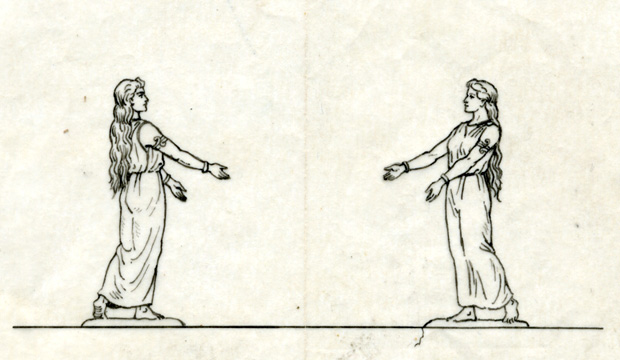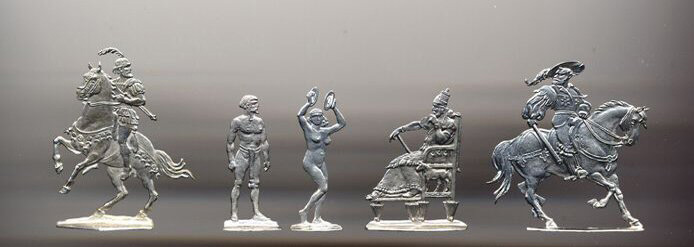

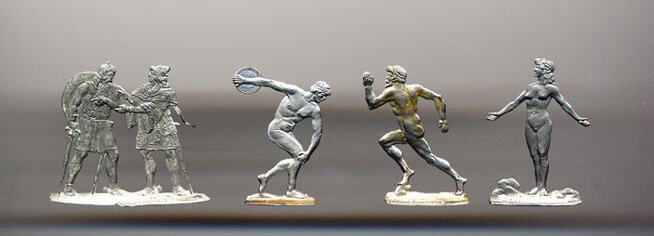
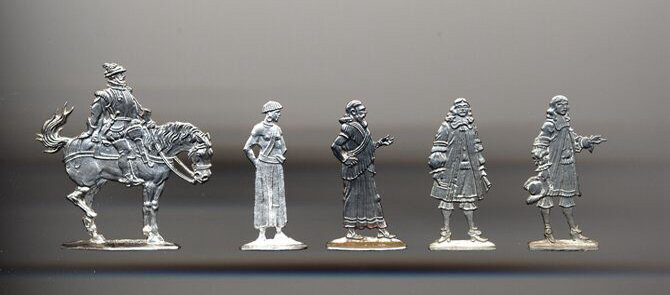
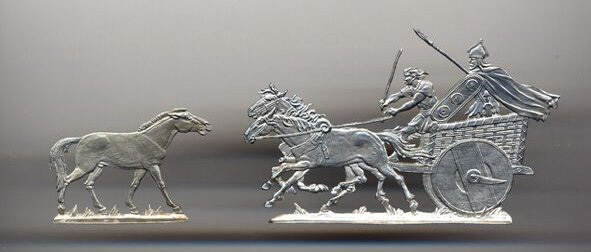
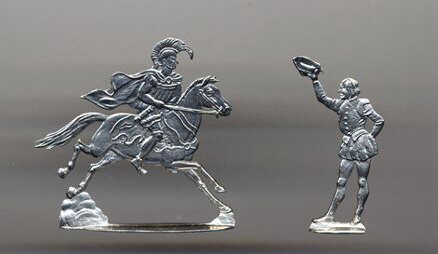
Engravers
There are but a few engravers I consider as masters.
Ludwig Frank
(1870-1957) has produced thousands of engraved figures and much of his work
is of pristine quality. His figures are often gracile and his horses depict
power and speed.
Franz Karl Mohr (1896-1970)
paid a lot of attention to the character of his figures including conspicuous
facial expressions, but unfortunately he was not that good at doing horses.
Otto Thieme has a coarse and
down-to-earth stile, a very strong relief.
Sixtus Maier Jr. (1907-1968)
is a sort of blend of several good engravors.
Johannes Frauendorf (1889-1972)
also has his own distinctive style, being elegant with relatively low relief.
His figures are typically slender. He, like several other engravors as e.g.
Mohr, made the drawings to his own engravings but also a lot of drawings for
other engravors.
Masters in the making -
Wolfgang Friedrich (1954), has sin own, gracile style. A clear egraving with medium relief, reminding of Frank's style, especially in horses. Vivid and realistic figures.
Vladimir Nuzhdin (1961), a very skillfull and meticulous artist working in many different material. His engravings in slate stone for tin figures, often depicting myhtical figures, are astonishing.
Below are some examples of figures made by my favourite engravers.
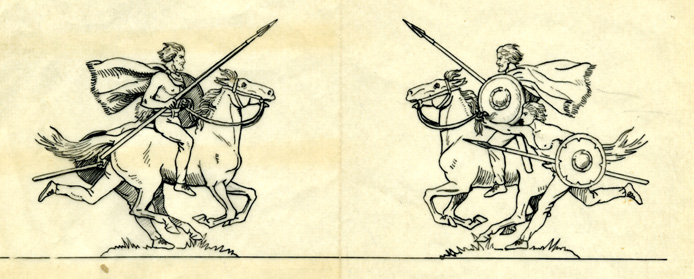
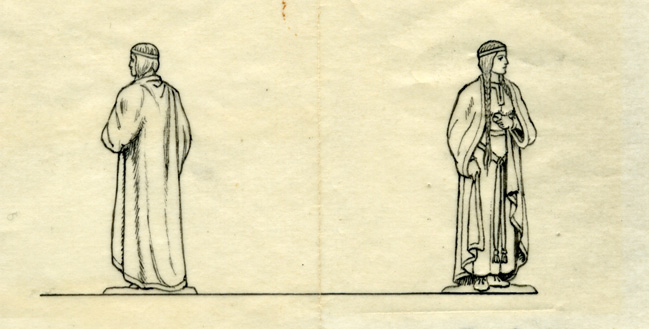
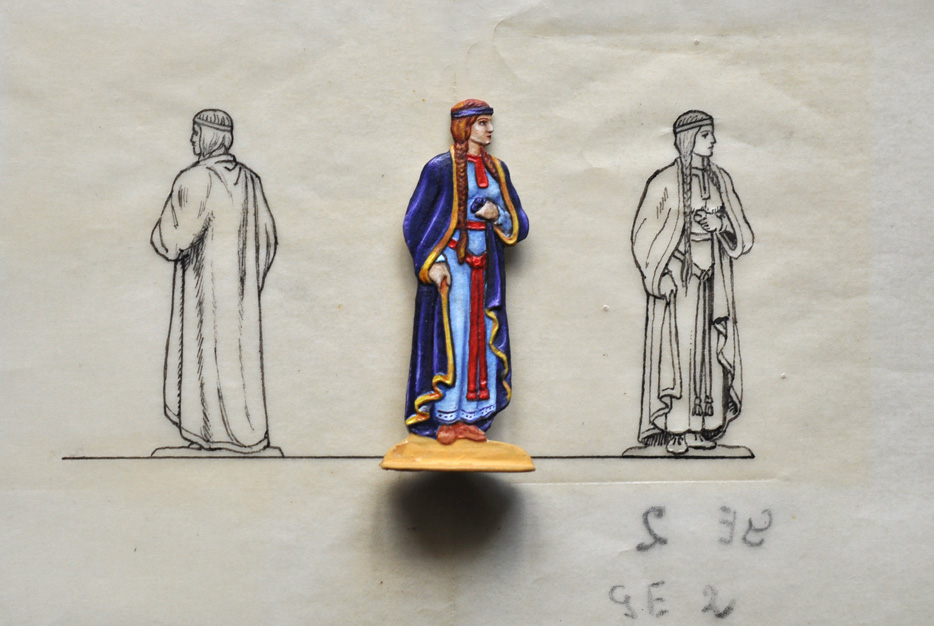
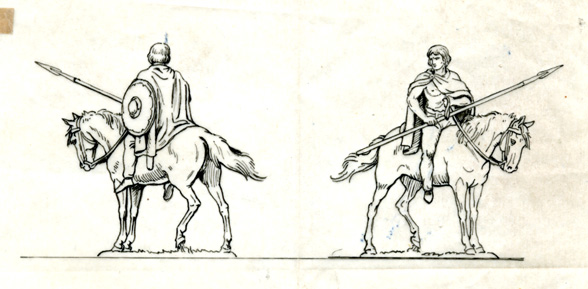
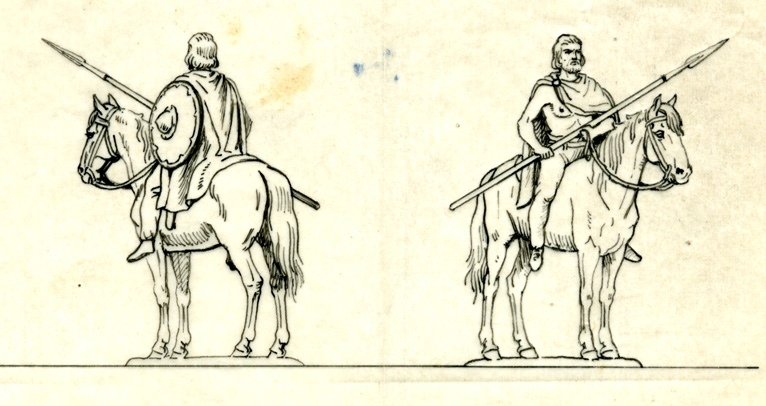
Artists
During the golden days of the tin figure the original drawings
were made in Indian ink in the same size as the figure would be engarved,
i.e. 30-mm from eye to foot. Below are some original drawings (enlarged here)
made by Ludwig Madlener (1903-1976) from my collection.
This artist made thousands upon thousands of drawings for many different editors.
Ludwig Madlener's drawings are, as far as I am concerned, small collectable
masterpieces of their own right and maybe one of the tin figure world's most
accurate and sensitive pattern for the engraving of figures.
Other talented artists involved in the creation of tin figures were Lucien Rousselot (1900-1992), Fritz Krischen (1881-1949), Franz Karl Mohr (1896-1970), Johannes Frauendorf (1889-1972), Louis Charles Bombled (1862-1927) Alexander Wilke (1879-1954) and Ludwig Frank (1870-1957). Sometimes the finished figure reveals the artist behind the drawing, but sometimes it is more uncertain as to which artist drew the original. Thus, the artists stated below are uncertain in some cases.
